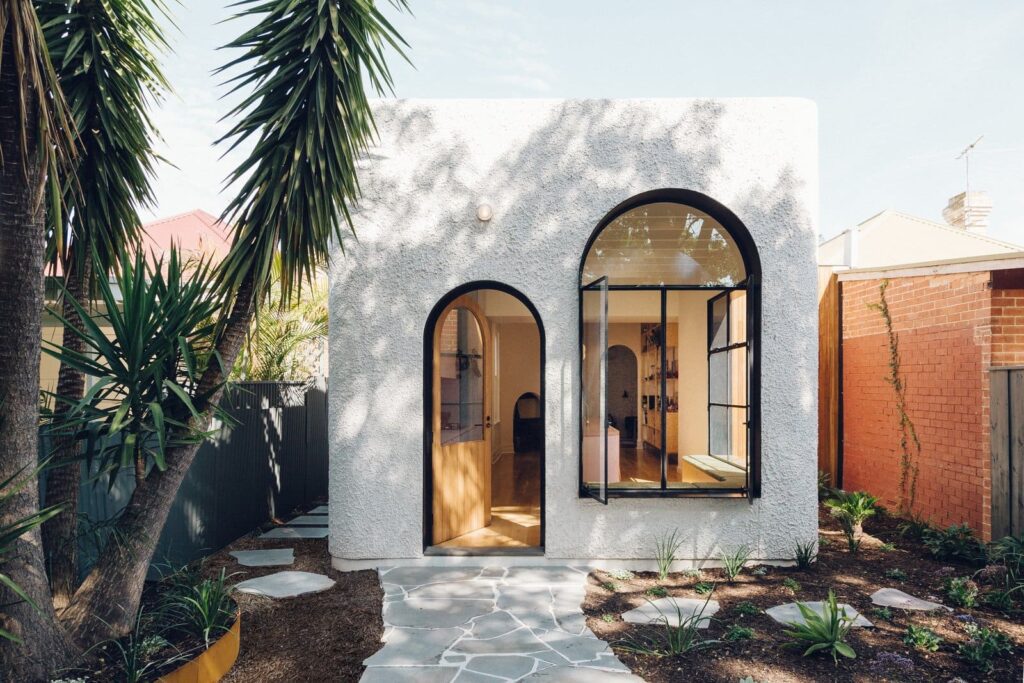Architectural trends come and go, but the allure of arched doorways in modern home design remains timeless. Combining aesthetic appeal with cultural significance, arched doorways have evolved from classical architecture to become a staple in contemporary homes. This article explores the integration of arched doorways into modern residences, providing a comprehensive guide to enhancing your home’s design with this elegant feature.
Understanding the Appeal of Arched Doorways
Arched doorways are more than just a decorative element; they are a design choice that offers both functional and psychological benefits. Physically, an arch is stronger than a flat structure and can support more weight, making it an ideal choice for load-bearing walls. Psychologically, arched doorways can make spaces seem larger and more inviting, which is a crucial aspect in modern minimalist designs where openness and flow are paramount.
Design Considerations for Arched Doorways
Incorporating arched doorways requires careful consideration of the existing architectural style of your home. Here are some key factors to consider:
- Scale and Proportion: The size of the arch should complement other architectural elements in the room, such as windows, ceilings, and doors.
- Material Selection: Choose materials that echo the home’s existing elements. Common materials for arched doorways include wood, stone, and plaster.
- Placement: Position arched doorways strategically to enhance visual flow and connectivity between rooms.
Types of Arched Doorways
Arched doorways can vary in style, each bringing a unique vibe to modern interiors:
- Classic Arch: Timeless and elegant, this traditional form suits a variety of homes, from historic renovations to new builds.
- Elliptical Arch: Offers a subtle curvature that works well in highly modern or minimalist spaces.
- Gothic Arch: Characterized by a sharp, pointed apex, this style is ideal for adding a dramatic touch to an otherwise understated design.
Step-by-Step Guide to Installing Arched Doorways
- Design and Planning: Work with an architect or designer to create a blueprint that respects the structural integrity of your home.
- Structural Assessment: Consult a structural engineer to ensure that the installation will not compromise the building’s framework.
- Construction: Choose skilled craftsmen who specialize in the type of materials you have selected for your arched doorway.
Decorating Around Arched Doorways
Once installed, decorating around arched doorways can enhance their beauty and the overall aesthetic of the room. Consider these decorating tips:
- Color Contrast: Paint the arch a contrasting color to make it a focal point in the space.
- Lighting: Install accent lighting above or within the arch to highlight its shape and add ambiance to the room.
- Complementary Decor: Use rounded furniture and decor elements to echo the curvature of the arch.
Case Studies of Arched Doorways in Modern Homes
We have seen arched doorways beautifully integrated into various homes, from urban apartments to country houses. For instance, a recently renovated home in Austin, Texas, features a stunning Gothic arch in the entryway that complements its modern, industrial aesthetic. Another example is a beachfront property in Malibu, California, where elliptical arches provide a smooth transition between the indoor spaces and the scenic outdoor areas.
Maintaining Arched Doorways
Maintaining arched doorways involves regular inspections and care, especially if they are made from natural materials like wood or stone. Regular cleaning and occasional sealing can keep these structures in pristine condition and prolong their life.
Incorporating arched doorways into your home is not just about following a trend. It is about creating a timeless space that offers beauty, functionality, and a seamless flow between different areas of your home. With careful planning and creative design, arched doorways can transform your modern home into a unique and inviting space.


